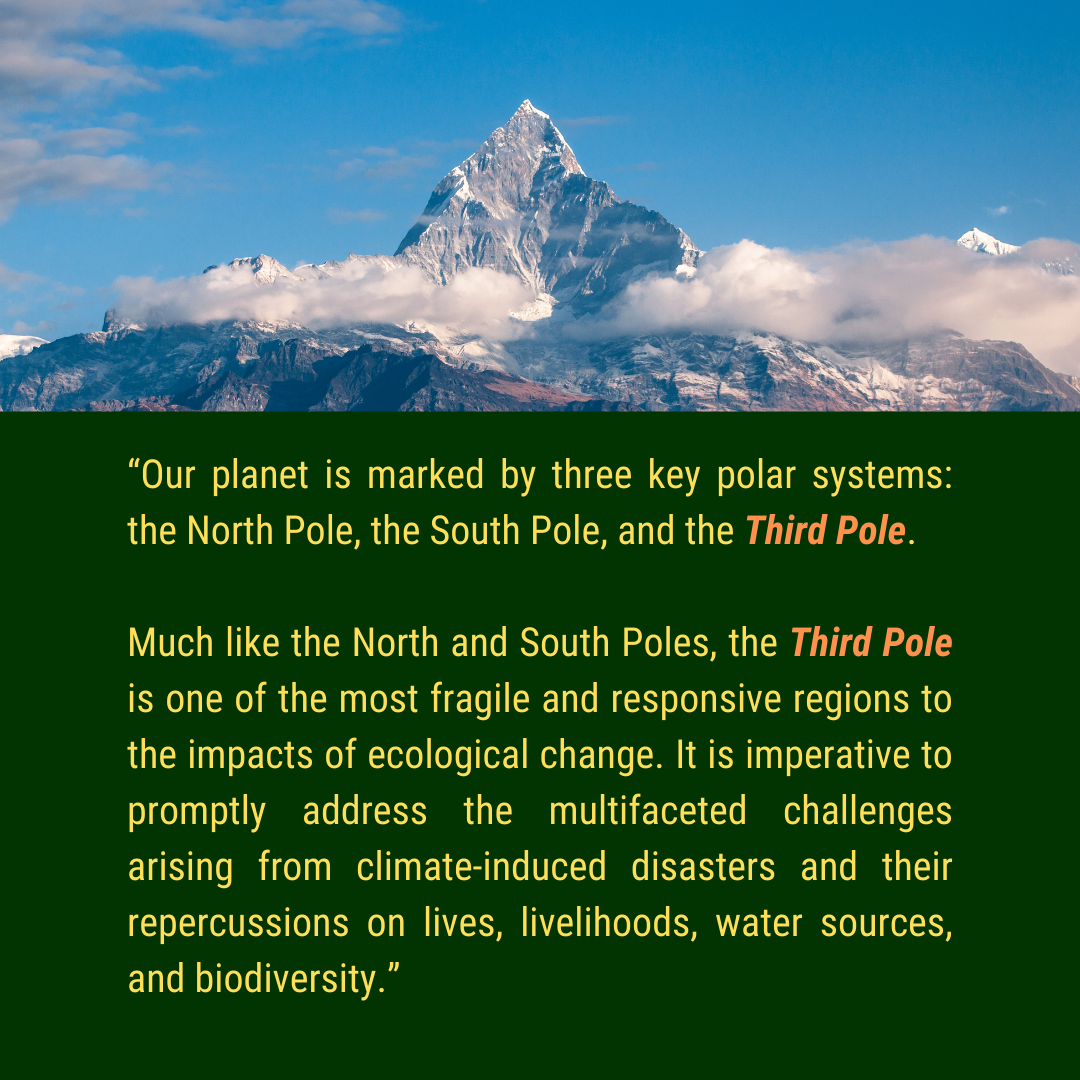12th Eastern Himalayan Naturenomics Forum 2024
26th-27th November 2024
Guwahati, Assam, India
- days
- Hours
- Minutes
- Seconds
The Future of the Third Pole and the Eastern Himalaya
Located at the intersection of South, Central, and East Asia, the massive Tibetan Plateau is often considered to be Earth’s “Third Pole.” A land of large glaciers, permafrost, and heavy snow, the plateau feeds a vast network of rivers, including major waterways like the Ganges, Indus, Mekong, Yangtze, and Yellow. These rivers, which together make up Asia’s “water tower,” provide water to nearly 40% of the world’s population.
The Third Pole region is the world’s third largest repository of ice, after North and South Poles. It contains the largest ice mass outside the polar regions, provides freshwater resources to more than two billion people, regulates the climate, protects biodiversity and is socioeconomically important.
Register now
The Third Pole is Vital for Himsagar (Eastern Himalaya)
The Himsagar (Eastern Himalaya) located within the vast region stretching from the Pamir Mountains, covering the Indo-Malayan realm to the Indian Ocean, plays a crucial role in maintaining ecological balance and showcasing rich forest diversity.
The Third Pole's glaciers and water reservoirs are crucial for preserving the Eastern Himalayan region's ecosystems and providing habitat for over 5000 plants and animals. For instance, Red Pandas primarily inhabit bamboo-filled temperate forests in the Himalayan foothills, which depend on water from the Third Pole. Any disruption to this water supply, like decreased glacier melt caused by climate change, could lead to habitat loss for Red Pandas. While the urgency of regional approaches to protecting natural assets like the Amazon or the Congo Basin or the Great Barrier Reef in Australia have rightly been well understood, the Himsagar (Eastern Himalaya) have not been part of the global conversation.
The Eastern Himalayan Naturenomics™ Forum 2024 will extensively explore discussions surrounding the third pole and its critical significance in the Himsagar region, encompassing ecology, communities, and forests. Recognizing a significant gap in ecological evaluations while navigating the delicate balance between development and action in the region, there is an urgent need to integrate LEEWAC into regional plans to amplify positive outcomes. The forum is poised to drive robust discussions and foster actionable outcomes that will positively impact the region's ecological sustainability and the well-being of its inhabitants.
Read More
